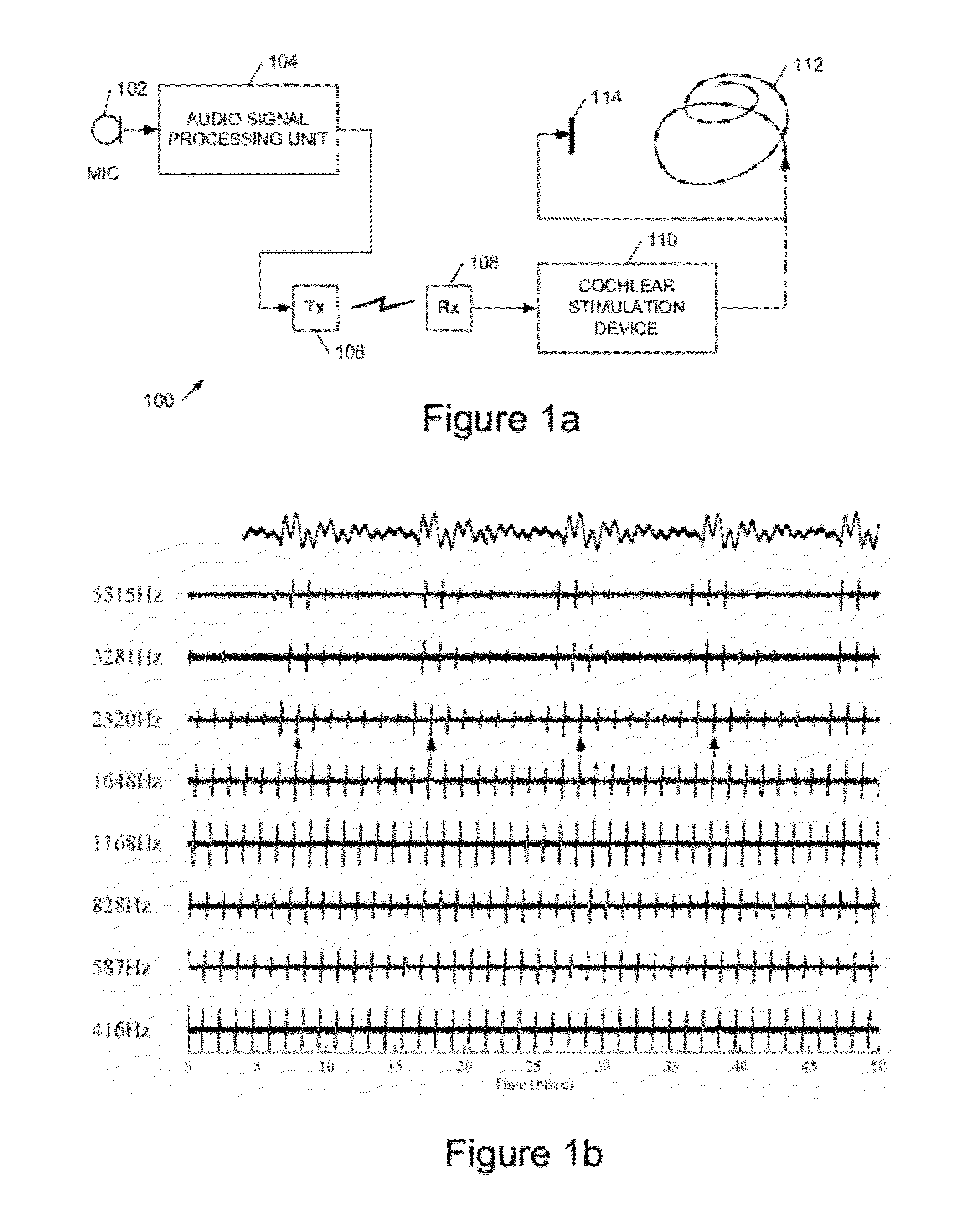Cochlear implant apparatus and methods
a technology of cochlear implants and apparatus, applied in the field of cochlear implants, can solve the problems of poor but adequate speech, bipolar stimulation is considered less efficient than monopolar stimulation, and the pitch increases, so as to improve the temporal pitch percept, respond more quickly, and improve the effect of pitch percept in the lower pla
- Summary
- Abstract
- Description
- Claims
- Application Information
AI Technical Summary
Benefits of technology
Problems solved by technology
Method used
Image
Examples
Embodiment Construction
[0055]We have shown that, at a comfortable listening level, the phase that produces the excitation in monopolar mode is the positive (anodic) phase of the pulse. We now describe how, by manipulating the pulse wave form, in particular using different sorts of asymmetric stimuli, and presenting these in bipolar mode, it is possible: to focus the current at more apical regions of the cochlea than can be achieved with symmetric biphasic pulses in monopolar or bipolar mode, which results in producing a lower place pitch percept to the implant user; to increase the upper limit of temporal pitch perception; to implement a speech processing strategy to use these findings to improve pitch perception in cochlear implant users; and to implement neural steering to produce intermediate place pitch percepts between physical electrodes, for example in devices where only one current source is available.
[0056]Referring to FIG. 3A, this shows an example in which current is injected via one electrode ...
PUM
 Login to View More
Login to View More Abstract
Description
Claims
Application Information
 Login to View More
Login to View More - R&D
- Intellectual Property
- Life Sciences
- Materials
- Tech Scout
- Unparalleled Data Quality
- Higher Quality Content
- 60% Fewer Hallucinations
Browse by: Latest US Patents, China's latest patents, Technical Efficacy Thesaurus, Application Domain, Technology Topic, Popular Technical Reports.
© 2025 PatSnap. All rights reserved.Legal|Privacy policy|Modern Slavery Act Transparency Statement|Sitemap|About US| Contact US: help@patsnap.com



